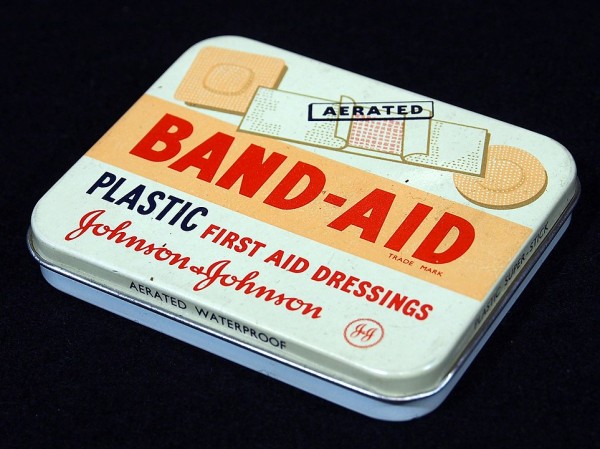Band-Aid Introduces Skin Tone-Shaded Bandages in Support for Black Communities

Founded in 1920, Band-Aid introduced a range of plasters in various skin tones 15 years ago.
Band-Aid recently announced it is launching an array of bandages coming in dark and light shades for its products to be more "racially inclusive."
The company's announcement of its new products came out in its Instagram account with a photo showing adhesive strips in five different shades, which include pale "shades to darker hues."
A part of Johnson & Johnson, Band-Aid developed bandages as an expression of its commitment to endorsing diversity, not to mention, in support for people fighting for racial equality after the killing of African American George Floyd in May, in Minneapolis.
In its social media post, Band-Aid said, they stand "in solidarity with our Black colleagues, collaborators, and community" in combating racism, injustice, and violence.
In addition, Band-Aid's social media post also indicated that the company is dedicated to taking actions for the creation of physical change "for the Black community."
ALSO READ: A Benefit of Exercise That You Probably Haven't Heard Much About
Shades of Bandages Signifying Skin Tones
The company also said through the post, and it is dedicated to introducing a collection of bandages "in light, medium and deep shades of Black and Brown skin tones" that employs the attractiveness of different skin.
Band-Aid has also expressed its commitment to inclusivity and offering the best treatment solutions, better-representing races.
Founded in 1920, this firm formerly introduced an array of bandages in various skin tones 15 years ago. The company's spokesperson said via the US news channel, NBC, that they are excited to bring back a similar bandage, this time, with enhanced, "comfort and flexibility."
Johnson & Johnson's Promise
Johnson & Johnson has vowed that for the next three years, the company is giving $10 million to combat racial inequality and injustice in the US. Its Band-Aid brand, on the other hand, is said to be "donating $100,000" to the Black Lives Matter movement.
It is not Band-Aid's first time to launch a collection of skin tone-shaded bandages, the NBC Chicago reported.
The news agency noted that the firm formerly introduced a collection of "perfect blend" plasters, as earlier mentioned, in 2005, but they were discontinued later on.
However, this is not the first time Band-Aid has launched a range of skin tone-colored plasters, according to NBC Chicago, which notes that the company previously launched a line of "perfect blend" bandages in 2005 that were later discontinued.
DON'T MISS THIS: FDA Approves Becton Dickinson's 15-Minute Handheld Rapid COVID-19 Test
Other Black-Inspired Bandages Offered
A 1950s advertisement had reportedly hyped the pink, "flesh-colored" appearance of Band-Aid, based on an "Atlantic Story" on the demise of "Ebon-Aid," a Black alternative in the early 2000s.
Relatively, according to Michael Panayiotis, an entrepreneur from New York, said in 2013 that the Black alternative had gone under from poor sales, partly because of "having been siloed on shelves" allotted to other products for the Black people, rather than those with the other first-aid items.
Then, in 2014, Tru-Colour Products, another firm, started to offer various bandages. Toby Meisenheimer, the company's founder, a white man, said in an interview with HuffPost, "he was inspired to launch Tru-Colour after his Black Son cut his forehead" and the Band-Aid he chose "stuck out as if it was a sore thumb."
IN CASE YOU MISSED THIS: Asthma as a Trigger for Severity of COVID-19, Ruled Out by Science
Jul 08, 2020 07:30 AM EDT





